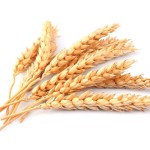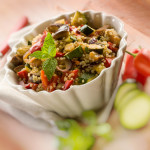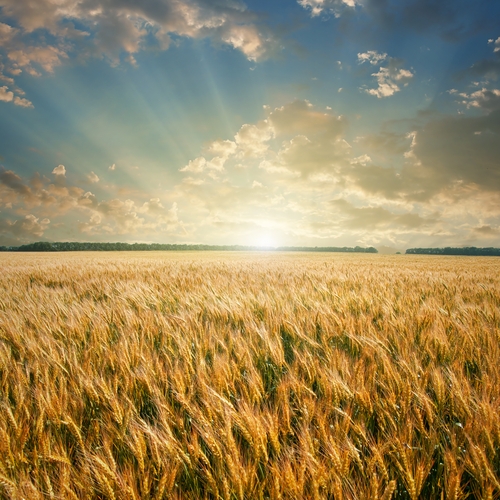From the time we first learn about nutrition in elementary school, the idea of “grains” taking up the majority of space at the bottom of the food pyramid comes to mind. It’s primary protein, Gluten, is foundation of each meal that is consumed and can be found in more food varieties than I could ever mention in this blog post. To be honest, I never really understood just how prevalent gluten actually was until my twin brother was diagnosed with celiac’s disease six years ago.
Now, in terms of the “gluten intolerance” gradient, celiacs tends to be a more severe health problem. This is because the lining of the small intestine is actually damaged due to ingesting gluten and ultimately prevents the body from absorbing necessary nutrients. Food literally cannot be digested and can cause severe stomach cramps, weight loss and lethargy. I know my brother would have days were he was unable to do anything due to ingesting too much gluten, and it wasn’t until he was officially tested and diagnosed with celiac disease that we were able to help him resolve the problem.
 The Rise of the Gluten Monster
The Rise of the Gluten Monster
The Mayo Clinic is known for being one of the largest celiac disease treatment centers in the United States. Their latest research shows that the prevalence of the disease is on the rise. A gastroenterologist at the clinic, Dr. Joseph Murray says that the ailment is actually a public health concern. Studies show four times the occurrence compared to the 1950s, where fatal complications can happen if the disease goes untreated. Nowadays, it is estimated that 1.8 million Americans suffer from celiac disease, but about 1.4 million people with the condition may not be aware they even have it.
“Celiac disease was rare, but it’s now more common in all age groups,” Dr. Murray said.
Although the cause is still not fully known or understood, celiac disease affects about one in 100 people. (Still, it should also be taken into consideration that about 1.6 million people in the U.S. are on a gluten-free diet even though they haven’t been diagnosed with celiac disease.)
You can read more about Dr. Murray’s findings by reading his Mayo Clinic article, which discusses his research on the matter.
Could Wheat be to Blame?
Dr. Murray is convinced that manipulation of wheat could actually be the culprit as to why so many individuals are not only diagnosed with celiac’s, but also why more and more individuals are becoming intolerant of gluten. The reason why the 1950’s is a turning point for the problem is due to the fact that during this era, scientists began cross-breeding wheat to make it hardier, shorter and easier t grow. It was this principle that became the founding belief of the “Green Revolution” that increased the harvests of wheat throughout the world. The U.S. plant scientist behind many of the innovations, Norman Borlaug, even won the Nobel Peace Prize for his work. Between pesticides, the expansion of irrigation infrastructures, and synthetic fertilizers, genetic mutations were unavoidable, along with future health concerns of the generations of people who ingested the food source.
 Wherefore Art Thou Nutrients, Wheat?
Wherefore Art Thou Nutrients, Wheat?
The Gluten Minded, a blog devoted to one woman’s food journey without gluten, illustrates just how different our wheat of today is compared to the wheat of our ancestors in the post titled The Rise of Gluten Intolerance: Modern Wheat. The blogger, Becky, says that even the preparation involved in cultivating wheat has changed. We used to soak, sprout an ferment our grains before cooking with them or baking. The entire process was necessary to decrease the gluten, lectins and phytates found naturally in the grains, which ultimately made everything easier to digest. That is literally the exact opposite of today where we refine and process the grains to the point that we get more gluten an other harmful components found in the grains.
Regaining Control
Basically, the over-processing of wheat is just one example of how messing with our food varieties is affecting not only our health today, but will affect the digestion of future generations. With so much industrial farming and GMO produced foods, there isn’t a lot of control as to what exactly is in the foods we put into our bodies. My brother’s life had changed after his diagnosis, but honestly, I think it changed for the better. He’s strong, healthy and ultimately a happier person knowing how to provide his body the most nutrients possible. While I am not saying that EVERYONE should go gluten-free (because a lot of people aren’t intolerant at all and choose to avoid the protein regardles), I am saying that we should all be conscious eaters not only in terms of knowing what is in our food sources, but also what our body needs to be at optimum health.
Green Diva Gluten-Free Recipes
For those of you who appreciate trying out some yummy gluten-free recipes, Green Diva Meg enjoys eating gluten-free. Click on her recipes below to start getting creative in the kitchen.
Green Diva Meg’s Gluten-Free, Arsenic-Free Quinoa Pilaf
Green Diva Meg’s Quick Veggie Pad Thai
Green Diva Meg’s Tempeh Salad
Listen to the latest Green Divas Foodie-Phile
[dynamic-sidebar id=’Custom Widget 2′]
Hamlet image via shutterstock
Wheat Stalk image via shutterstock
Monster image via shutterstock
Wheat field image via shutterstock

Pingback: Home-Made Organic Herbal Cough Syrup - Saturday Strategy | fitlife.tv